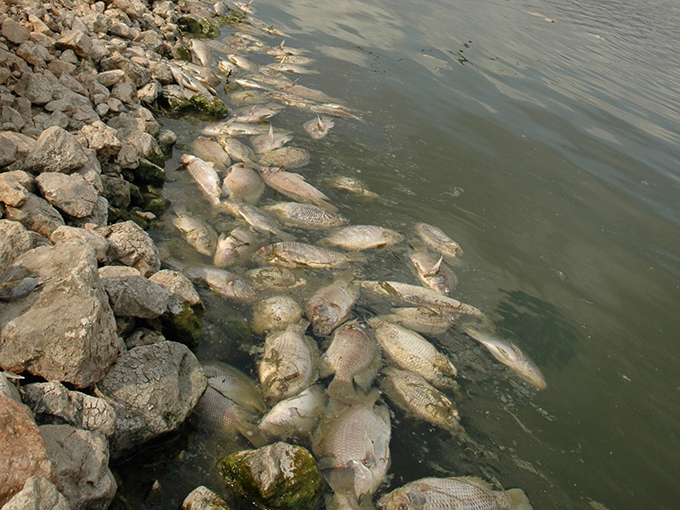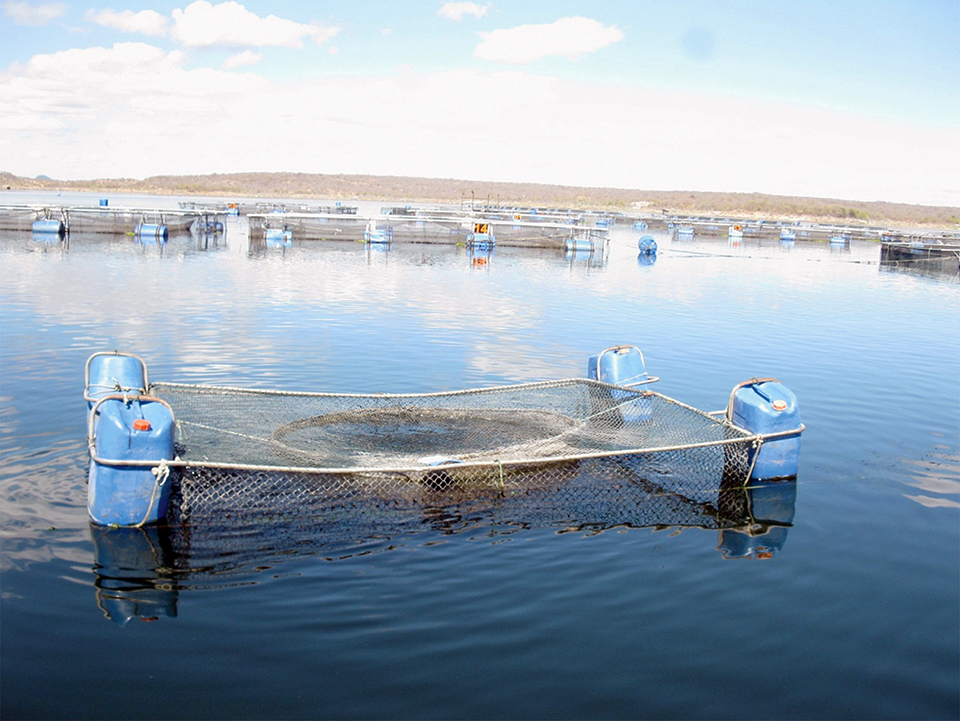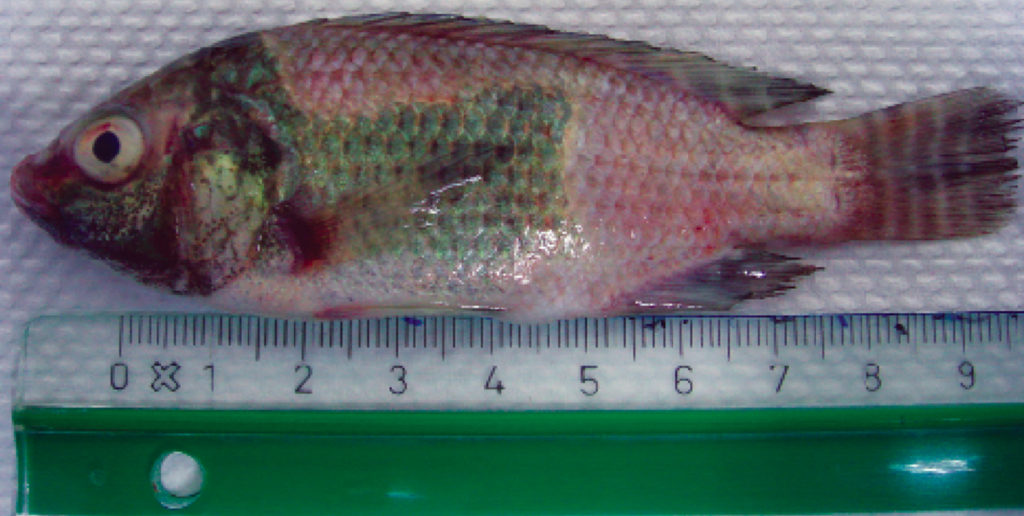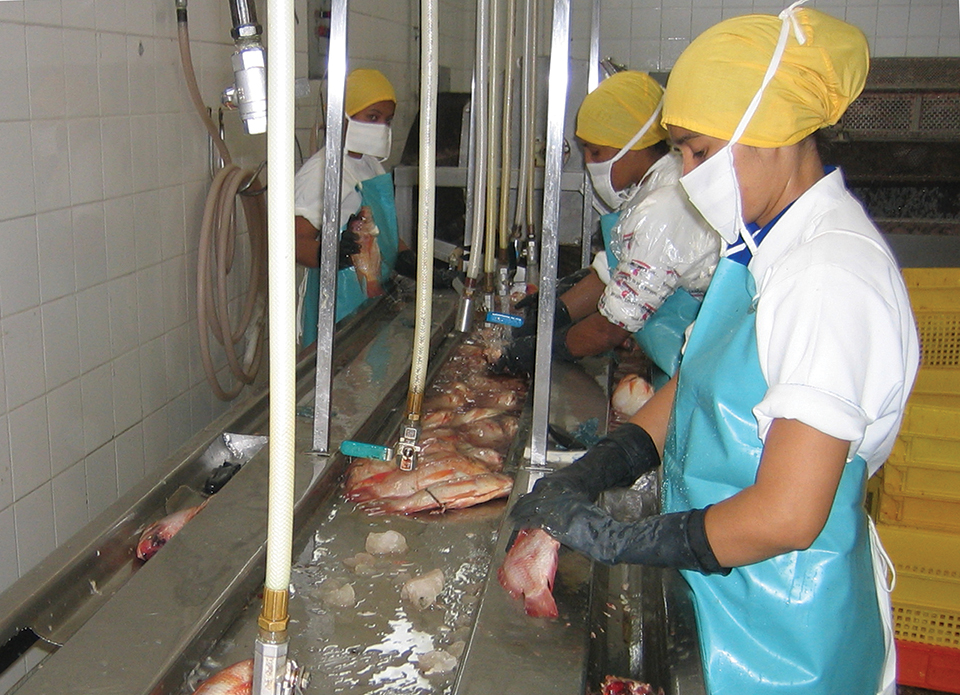Streptococcus iniae thrives in water-reuse facilities using large-capacity tanks

(Streptococcus iniae) is a significant bacterial pathogen that causes hemorrhagic septicemia and meningoencephalitis in tilapia, hybrid striped bass, rainbow trout, olive flounder, yellowtail, barramundi and other species of cultured and wild fish worldwide. In tilapia production, vaccination of fry against the bacteria is essential to reduce economic losses.
The goal of vaccination is to elicit a strong immune response to the administered antigen that is capable of providing long-term protection against infection. However, information on the efficacy of modified S. iniae vaccines in newly hatched tilapia fry is limited.
The authors recently evaluated the effects of bath immersion vaccination followed by booster vaccinations in protecting tilapia against S. iniae infection.
Streptococcosis outbreaks
Outbreaks of streptococcosis have significant economic impacts on the production of tilapia, especially in water-reuse facilities using large-capacity tanks. It is widely recognized that S. iniae thrives under these conditions and can cause continuous outbreaks in newly stocked tilapia fry.
Fish streptococcosis can be divided into clinical disease and silent or asymptomatic forms. The clinical form of the disease is associated with mass mortality and disease signs that can include exophthalmia, darkened coloration, spinal curvature and erratic swimming. Asymptomatic carrier fish have been infected and recovered but still harbor S. iniae in their tissues.
Asymptomatic carriers of S. iniae are the mostly likely source for recurring infection when the fish become stressed or immunocompromised. One mode of transmission is cannibalism of infected fish tissues such as internal organs, eyes and brain tissue by susceptible tilapia. Other possible sources for the transmission of S. iniae are culture water, feed or bio-films in tanks, pipes, filters and valves.
Tilapia study
Nile tilapia, (Oreochromis niloticus), with mean weight of 0.01 grams were vaccinated by bath immersion in water using a 0.2 percent solution of modified S. iniae vaccine for two minutes with aeration. The fish were sex-reversed with oral administration of 17-beta-methyltestosterone in their starter feed for 28 days. At an approximate mean weight of 0.3 to 0.4 grams, the fish were booster vaccinated by bath immersion with the vaccine. At 15 grams, the fish were booster vaccinated a second time.
Thirty days after vaccination, twenty 23-gram immunized and boostered tilapia were briefly placed with control tilapia vaccinated with a soy broth placebo in four aerated 57-liter tanks and challenged by intraperitonal injection using 1 x 106 or 1 x 107 colony-forming units per tilapia in duplicate. The tanks were supplied with flow-through dechlorinated water heated to 28 to 30 degrees-C. A photoperiod of 12 hours light and 12 hours dark was maintained. The fish were fed twice daily to satiation using a commercial starter feed.
At 14 days after challenge, the mortality and relative survival of the tilapia were determined. The placebo-vaccinated fish were distinguished by reading the calcein marking of their bone and fins using a portable ultraviolet lamp. The specific serum antibody titers were determined immediately before the S. iniae challenge in all the fish by enzyme-linked immunosorbent assay, a biochemical technique used to detect the presence of an antibody or antigen in a sample.
A titer is a measurement of the amount of antibodies in blood serum. Titer testing is performed by making increasing dilutions of the blood with saline water and measuring the dilution at which there is sufficient antibody to react. The higher the titer value, the more antibody is present.
Vaccine
The modified S. iniae vaccine was generated from a combination of formalin-killed cells and concentrated extracellular products (ECPs) from a virulent S. iniae isolate or master seed. (Streptococcus) species have a variety of virulence factors that include the capsular polysaccharide component, surface protein antigens, ECPs and factors associated with invasion, adherence and escape from fish defense mechanisms to establish infection in fish hosts.
The ECPs are soluble components of the cells that are secreted into the host environment or in culture medium. They consist of multiple components including exotoxins, chemotactic components, polysaccharides, proteins, hemolysins, hyaluronidase, streptokinase and peptidase. It is possible that more-virulent S. iniae isolates secrete higher concentrations of ECP than less-virulent isolates.
Results
The cumulative mortality and survival of tilapia challenged with S. iniae are shown in Table 1. Survival was higher in the tilapia challenged with the higher concentration of S. iniae.
Klesius, Efficacy of S. iniae vaccine, Table 1
| Tank | Colony-Forming Units/Challenge | Cumulative Mortality in Vaccinates/Controls (%) | Survival (%) |
|---|
Tank | Colony-Forming Units/Challenge | Cumulative Mortality in Vaccinates/Controls (%) | Survival (%) |
|---|---|---|---|
| 1a | 1 x 106 | 6/19 | 68 |
| 2a | 1 x 106 | 10/19 | 47 |
| 3a | 1 x 107 | 3/14 | 79 |
| 4a | 1 x 107 | 1/12 | 92 |
The serum antibody titers are shown in Table 2. The bath-vaccinated and boostered tilapia had a titer of 1/130, while the control tilapia had a titer of 1/30.
Klesius, Mean S. iniae serum antibody, Table 2
| Treatment | Fish Titered | Mean Serum Antibody Titer |
|---|
Treatment | Fish Titered | Mean Serum Antibody Titer |
|---|---|---|
| Control fish | 8 | 1/30 |
| Vaccinated fish | 8 | 1/30 |
The serum antibody was previously shown to correlate with protection against S. iniae (Shelby et al., 2002), and the results of this study indicated that bath immersion with multiple booster vaccinations did stimulate protective immune responses against S. iniae. The authors therefore concluded that bath immersion vaccination using diluted S. iniae vaccine in newly hatched tilapia followed by sex reversal and immersion boosters is efficacious against S. iniae infection.
Commercial benefits
This vaccination strategy may prove to be useful at tilapia farms, but these results are preliminary and more research is needed. One possible benefit of this strategy is that it offers a mass vaccination method that is less costly than injection delivery. Another benefit is lasting immunity from fry to market-size tilapia in production facilities.
(Editor’s Note: This article was originally published in the May/June 2008 print edition of the Global Aquaculture Advocate.)
Now that you've reached the end of the article ...
… please consider supporting GSA’s mission to advance responsible seafood practices through education, advocacy and third-party assurances. The Advocate aims to document the evolution of responsible seafood practices and share the expansive knowledge of our vast network of contributors.
By becoming a Global Seafood Alliance member, you’re ensuring that all of the pre-competitive work we do through member benefits, resources and events can continue. Individual membership costs just $50 a year.
Not a GSA member? Join us.
Authors
-
Phil Klesius, Ph.D.
Aquatic Animal Health Research Laboratory
USDA, ARS, MSA
990 Wire Road
Auburn, Alabama 36831 USA -

Craig Shoemaker, Ph.D.
Aquatic Animal Health Research Laboratory
USDA, ARS, MSA
990 Wire Road
Auburn, Alabama 36831 USA -
Joyce Evans, Ph.D.
Aquatic Animal Health Research Laboratory
USDA, ARS, MSA
990 Wire Road
Auburn, Alabama 36831 USA
Related Posts

Health & Welfare
Sizing up TiLV and its potential impact on tilapia production
An international research effort has commenced to find a solution for Tilapia Lake Virus (TiLV), a contagion causing high rates of mortality in farmed and wild tilapia stocks in Israel, Colombia, Ecuador, Egypt and Thailand.

Health & Welfare
Bacillus probiotics benefit tilapia rearing under challenging conditions in Brazil
A recent study that evaluated the benefits of using probiotics with a balanced mixture of Bacillus bacteria strains to inhibit pathogenic bacteria in tilapia.

Health & Welfare
Disease management in tilapia
Tilapia in culture are affected by bacterial, viral and parasitic pathogens. Disease impacts vary depending on both environmental and biological factors.

Intelligence
Food safety, quality control in tilapia products
The most important quality issue for tilapia is the presence of off-flavors that derive from cyanobacteria and actinomycetes, which can be addressed by depuration.



